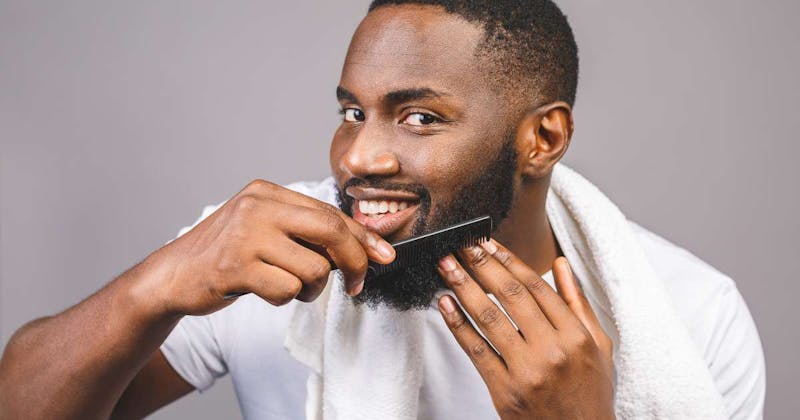Rooted in Results Let’s Get Growing
Hair loss is a symptom. We begin every journey by finding the cause, so your treatment plan isn’t just hopeful—it’s strategic, personalized, and proven to work.
Contact Our Team
Eyebrow hair transplants and beard transplants can be an important part of self-care and confidence-boosting procedures—for men and women alike. Women: Do you hate how thin your eyebrows are from overplucking, genetics, waxing or conditions like alopecia? Are you distressed by hair on your chin or upper lip? Men: Can you only grow a patchy beard at best? These concerns can be embarrassing and make you look older. If you’re troubled by your lack of eyebrow or beard hair, read on.
Eyebrows and beard transplants are surgical techniques that offer the best of both worlds, a permanent solution with the most natural look possible. How popular is transplantation for eyebrows and beards? In 2020, 9,500 eyebrow hair transplant procedures were successfully completed—and the numbers are rising for both eyebrows and beards as more people see the results.
Microblading is still a practical choice for men and women who want fuller facial hair. At other times, eyebrow and beard transplants are more appropriate or desirable. A professional hair restoration specialist can guide you in the direction that’s right for you. Northeast Hair performs both eyebrow and beard transplants, with experienced hair restoration specialists who deliver amazing results. Let’s look at the differences of the two techniques in more detail.
Eyebrow hair and beard transplants are a growing trend in Hollywood. Celebrities like Jennifer Lopez, Angelina Jolie and Scarlett Johansson have had eyebrow hair transplants. Male celebrities like David Beckham, Bradley Cooper, and Jamie Foxx chose transplants to get fuller beards.
The transplant procedure is not just for celebrities. Why? Self-care is part of our modern lifestyle, and looking youthful and more attractive never goes out of style. The development of eyebrow hair and beard transplants is a game-changer.
Tattooing was an early permanent solution for stronger-looking eyebrows. It became popular when thin eyebrows were the style, but it doesn’t meet the natural look we want today. Microblading burst onto the scene in the mid-2010s. It’s only semi-permanent, but looks much more natural than tattooing. Now, innovative eyebrow and beard hair transplants are grabbing the attention of women and men worldwide.
What’s the difference between eyebrow hair and beard transplants versus microblading? They’re quite different techniques, as you’ll see below. Both are available these days, but more people than ever are opting for surgical transplants.
Facial hair transplants and microblading have some crucial differences, with transplants having distinct advantages–especially for those with minimal eyebrow hair.
Transplants have permanent results and couldn’t look more natural–for a simple reason. Your own hair is grafted onto the eyebrows, not drawn on using ink.This is a short, one-time procedure, although the hairs need trimming from time to time.
Microblading is long-lasting, but still temporary. Microblading uses ink, drawing numerous hair-like strokes. While more natural looking than tattooing, it’s still a technique using ink to draw life-like hairs. The version of microblading for men, typically called beard micropigmentation, can be used to enhance facial hair, addressing issues like sparse areas, filling in gaps, and creating a more defined beard line.
Here are the downsides of microblading:
With microblading, the ink fades and dissipates over time. The patient must repeat (and pay for) the procedure every nine months or so to refresh the pigment and maintain the desired shape and color. When skillfully done, the results can be good, but microblading lacks the texture of natural hair.
Microblading can be a practical solution for those without severe eyebrow and beard hair loss who just want some minor filling in, darkening, or a somewhat different shape. However, if the hairs are sparse, it may look painted on and unnatural.
With both eyebrow and beard transplants, hair growth patterns are different for each patient, calling for a thorough consultation and customized approach. Eyebrow hair and beard grafts use the same minimally invasive procedure, known as follicular unit extraction (FUE).
First, the patient is given a local anesthetic so the procedure is painless. In FUE, the surgeon harvests follicular units of one to four individual hairs from a donor area on the scalp. After closing up the donor area, the surgeon makes micro-slits in the target location, into which the follicles are precisely placed using specialized instruments. The procedure typically takes three to four hours.
After the procedure is complete, recovery typically takes one to two weeks, and normal activities can be resumed after a few days. During recovery, the patient may experience some swelling, scabbing, or redness from inflammation at the transplant site. As the graft takes, there may be some hair shedding, but it’s only temporary.
Following the transplant, your surgeon will give you aftercare instructions to protect the transplant area, avoid infection, and speed up recovery. The follicles will fully take and begin to naturally grow new hair in two to three months, although the speed will vary from patient to patient. The clinic will schedule follow-up appointments, and you should call if you have questions or concerns.
FUE eyebrow hair and beard transplants have some distinct advantages. Here’s a quick breakdown:
Whether your eyebrow hair or beard is sparse, patchy, or poorly shaped, a facial hair transplant can be the ideal solution. Permanent and natural looking, your transplant will give you a new level of confidence.
Are you ready to explore eyebrow hair or beard transplants? Northeast Hair Restoration’s experienced surgeons and technicians are committed to meeting your individual needs with a customized approach, advanced techniques, and dedication to achieving the best results. We welcome you to book your initial consultation at either of our two locations in Worcester or Boston or call us at (774)-500-3896.